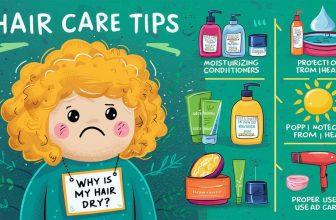How to Get Rid of Textured Skin: 5 Simple Tips

The texture is important when it comes to the overall appearance of our skin. While having textured skin can be annoying, having smooth, even skin can make us look radiant and youthful. Indications of textured skin include rough areas, larger pores, and acne scars. Finding effective remedies to get rid of textured skin requires first understanding its causes.
What is textured skin?
Textured skin refers to any irregularities or unevenness on the surface of the skin. These imperfections can be caused by a variety of factors, including acne, sun damage, aging, and genetics. Texture irregularities can range from roughness and bumps to indentations and scars.
Different types of skin texture irregularities
Textured skin can present itself in different forms, depending on the underlying cause. Some common types of skin texture irregularities include:
Acne scars: These are remnants of past breakouts, leaving behind uneven or pitted areas on the skin.
Enlarged pores: When our pores become clogged with dirt, oil, and debris, they can appear larger and more prominent.
Rough patches: Dryness, lack of exfoliation, or environmental factors can lead to rough and uneven patches on the skin.
Importance of a consistent skincare routine
Maintaining a consistent skincare routine in order to get rid of textured skin is crucial for improving the texture of your skin. Regular care and attention can help address existing issues and prevent further damage. When it comes to getting long-lasting benefits, consistency is essential.
Identifying your skin type for tailored products
Understanding your skin type is essential in selecting the right products for your skincare routine. Each skin type has specific needs and may require different approaches. Whether you have dry, oily, combination, or sensitive skin, identifying your skin type can help you choose products to get rid of textured skin and its unique requirements.
Cleansing techniques to improve skin texture
To get rid of textured skin, Proper cleansing is a fundamental step in any skincare routine. Cleansing helps remove impurities, excess oil, and dead skin cells that can contribute to textured skin. Consider incorporating gentle cleansing techniques, such as double cleansing or using a soft cleansing brush, to enhance the effectiveness of your skincare routine.
Tip 1: Exfoliation for Smooth Skin
Benefits of regular exfoliation
Exfoliation is a vital step in achieving smooth and refined skin texture. By removing dead skin cells and stimulating cell turnover, exfoliation helps reveal fresher, healthier skin. Regular exfoliation can also enhance the absorption of skincare products and promote a radiant complexion.
Different exfoliation methods (chemical, physical, enzymatic)
There are various exfoliation methods to get rid of textured skin available, each with its own unique benefits. Chemical exfoliation typically involves the use of acids, such as alpha hydroxy acids (AHAs) or beta hydroxy acids (BHAs), to gently dissolve dead skin cells. Physical exfoliation, on the other hand, involves using granules or brushes to physically slough off dead skin cells. Enzymatic exfoliation utilizes enzymes, such as papaya or pineapple, to gently dissolve dead skin cells.
Selecting the appropriate exfoliant for your skin type
Selecting the right exfoliator for your skin type is crucial to ensure optimal results and minimize the risk of irritation. If you have sensitive skin, opt for gentler exfoliators with mild acids or enzymatic formulas. For oily or acne-prone skin, products containing salicylic acid can help unclog pores. Those with dry skin may benefit from moisturizing exfoliators that offer hydration while sloughing off dead skin cells.
Tip 2: Nourishment from Within
Our skin’s health is not solely dependent on external factors; what we consume internally also plays a significant role. The nutrients we provide to our bodies through our diet can directly impact the texture and appearance of our skin.
Certain nutrients are particularly beneficial for improving skin texture.
Omega-3 fatty acids: Found in foods such as salmon, walnuts, and flaxseeds, these healthy fats help strengthen the skin barrier and reduce inflammation.
Antioxidants: Vitamin C, vitamin E, and beta-carotene are powerful antioxidants that protect the skin from damage caused by oxidative stress. Excellent sources include citrus fruits, leafy greens, and colorful veggies.
Foods that promote collagen: Collagen, a protein, gives the skin structure. Consuming foods rich in collagen-boosting nutrients, such as bone broth, berries, and dark leafy greens, can help improve skin elasticity.
Incorporating certain foods into your diet can promote healthy skin texture. Foods such as avocados, sweet potatoes, and almonds provide essential vitamins and healthy fats. On the other hand, it’s advisable to limit your intake of processed foods, sugary drinks, and excessive alcohol, as they can contribute to skin inflammation and texture issues.
Tip 3: Hydration for Plump, Supple Skin
Importance of proper hydration for skin texture
Hydration is key to achieving plump, supple skin texture. When our skin lacks moisture, it can appear dull, and dry, and even accentuate texture irregularities. Proper hydration helps maintain the skin’s natural moisture barrier, keeping it soft, smooth, and more resilient.
Recommended daily water intake
While there is no one-size-fits-all answer to proper hydration, a general guideline is to drink at least 8 glasses (64 ounces) of water per day. Individual needs, however, might change according to the temperature, degree of activity, and general health. Listen to your body’s signals and aim to drink enough water to stay adequately hydrated.
Hydrating skincare products and their benefits
Apart from consuming an adequate amount of water, incorporating hydrating skincare products into your routine can significantly improve skin texture. Look for skincare products that contain hydrating ingredients like hyaluronic acid or glycerin. These ingredients help attract and retain moisture, resulting in plumper and more supple skin.
Tip 4: Targeted Treatments for Textured Skin
Specific treatments for different textures (acne scars, enlarged pores, rough patches)
Addressing specific texture concerns may require targeted treatments. For acne scars, options such as chemical peels or micro-needling can help promote collagen production and improve the appearance of scars. Enlarged pores can benefit from treatments such as laser therapy or pore-minimizing serums. Rough patches can be smoothed out with the use of exfoliating masks or moisturizers.
Dermatological options (chemical peels, microdermabrasion, laser therapy)
If you’re looking for professional solutions, dermatological treatments can offer significant improvements in skin texture. Chemical peels involve the application of acid solutions to remove the top layers of skin, revealing smoother, more youthful skin underneath. Microdermabrasion uses a specialized device to gently exfoliate the skin, reducing texture irregularities. Laser therapy utilizes targeted light energy to stimulate collagen production and address specific skin concerns.
At-home treatment alternatives
While professional treatments can deliver noticeable results, there are also at-home treatment alternatives available. Products containing ingredients like retinol, niacinamide, or vitamin C can help improve skin texture over time. It’s essential to follow instructions carefully and be patient, as gradual improvements can take time.
Tip 5: Protection from Environmental Factors
The role of environmental factors in textured skin
Environmental factors, such as sun exposure and pollution, can contribute to textured skin. UV radiation and free radicals can damage collagen and elastin, leading to uneven skin texture and premature aging.
Shielding your skin from sun damage with SPF
Sun protection is paramount when it comes to preventing textured skin. Incorporating a broad-spectrum sunscreen with at least SPF 30 into your daily routine can shield your skin from harmful UV rays. Apply sunscreen generously, reapply throughout the day, and don’t forget to protect often-overlooked areas like the neck and hands.
Using antioxidants and barrier creams for protection
In addition to sun protection, incorporating antioxidants into your skincare routine can provide further defense against environmental damage. Look for products containing ingredients such as vitamin C, resveratrol, or green tea extract. Barrier creams enriched with ceramides or hyaluronic acid can also help strengthen the skin’s natural barrier, preventing moisture loss and protecting against external aggressors.
Summary of the 5 Tips
Exfoliate regularly using the right method for your skin type to promote smoother skin.
Nourish your skin from within by consuming a balanced diet rich in skin-healthy nutrients.
Keep your skin hydrated to maintain a plump and supple texture.
Consider targeted treatments or dermatological options to address specific texture concerns.
Protect your skin from environmental factors, such as sun damage and pollution, with SPF and antioxidant-rich products.
Achieving smoother, more refined skin texture is possible with the right approach and consistency. By understanding the causes of textured skin and implementing these five simple tips, you can take significant steps toward improving your overall skin appearance. Due to the fact that each person’s skin is unique, it’s critical to pay attention to your skin’s needs and adjust your skincare routine as necessary. Here’s to smoother, more radiant skin!
FAQs
How long before results start to improve?
The timeline for seeing improvements in skin texture can vary depending on the individual and the severity of the texture issues. Generally, it can take several weeks to months to notice noticeable changes.
Is it necessary to consult a dermatologist for textured skin?
It is not always necessary to consult a dermatologist for textured skin, especially if the issues are mild. However, if you have severe or stubborn texture concerns, seeking professional advice can help determine the most effective treatment options.
Can these tips be followed by all skin types?
Yes, these tips can be followed by individuals with all skin types. However, it’s important to tailor the suggestions to your specific skin needs and sensitivities.
Are there any specific products recommended for textured skin?
While specific product recommendations may vary based on individual preferences and needs, it’s generally beneficial to look for skincare products with exfoliating, hydrating, and protecting properties. Ingredients like glycolic acid, hyaluronic acid, and SPF are commonly found in products aimed at improving skin texture.







vurcazkircazpatliycaz.HRTKOMmNoxbP